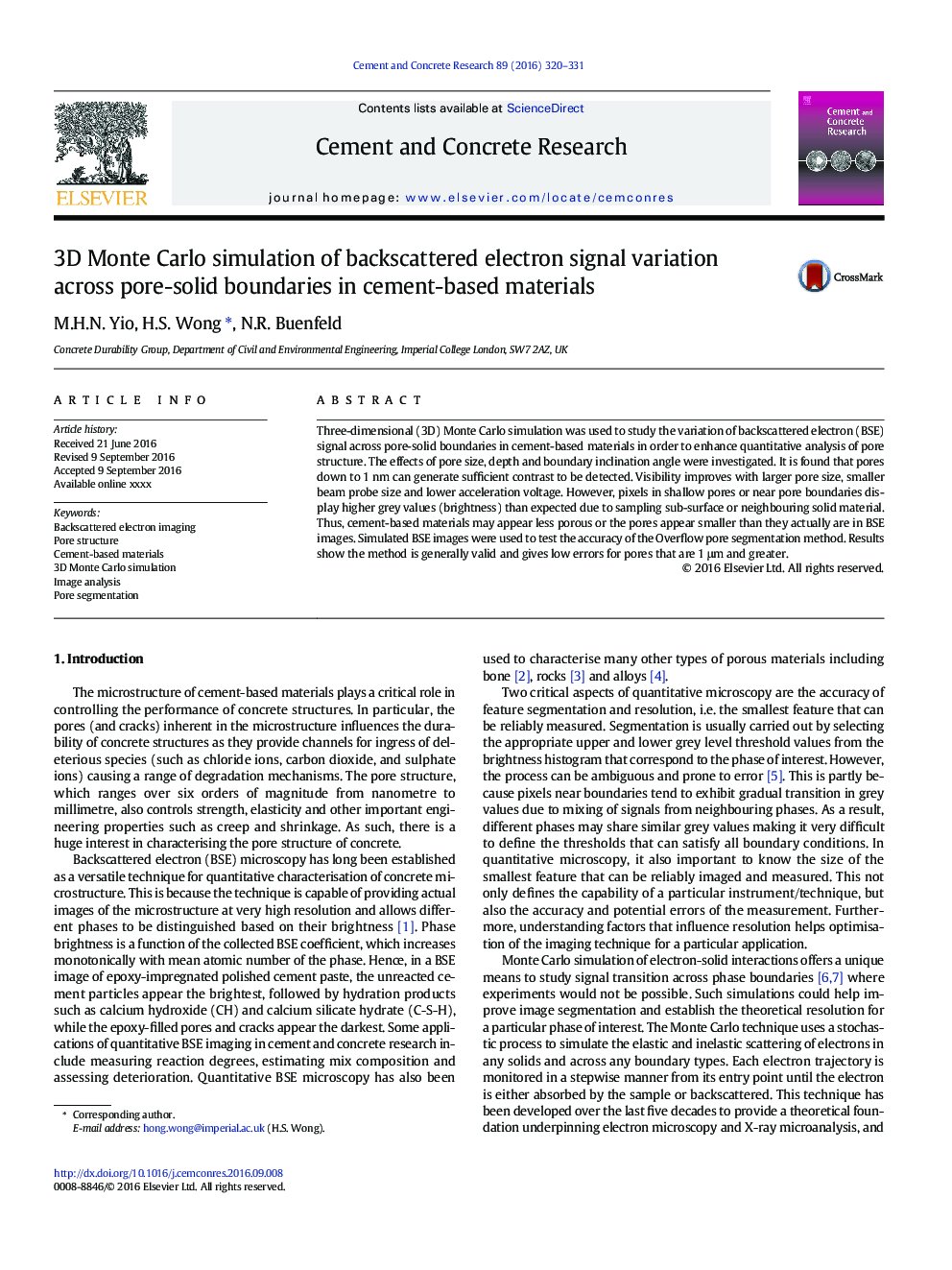| Article ID | Journal | Published Year | Pages | File Type |
|---|---|---|---|---|
| 7885029 | Cement and Concrete Research | 2016 | 12 Pages |
Abstract
Three-dimensional (3D) Monte Carlo simulation was used to study the variation of backscattered electron (BSE) signal across pore-solid boundaries in cement-based materials in order to enhance quantitative analysis of pore structure. The effects of pore size, depth and boundary inclination angle were investigated. It is found that pores down to 1 nm can generate sufficient contrast to be detected. Visibility improves with larger pore size, smaller beam probe size and lower acceleration voltage. However, pixels in shallow pores or near pore boundaries display higher grey values (brightness) than expected due to sampling sub-surface or neighbouring solid material. Thus, cement-based materials may appear less porous or the pores appear smaller than they actually are in BSE images. Simulated BSE images were used to test the accuracy of the Overflow pore segmentation method. Results show the method is generally valid and gives low errors for pores that are 1 μm and greater.
Related Topics
Physical Sciences and Engineering
Engineering
Industrial and Manufacturing Engineering
Authors
M.H.N. Yio, H.S. Wong, N.R. Buenfeld,
